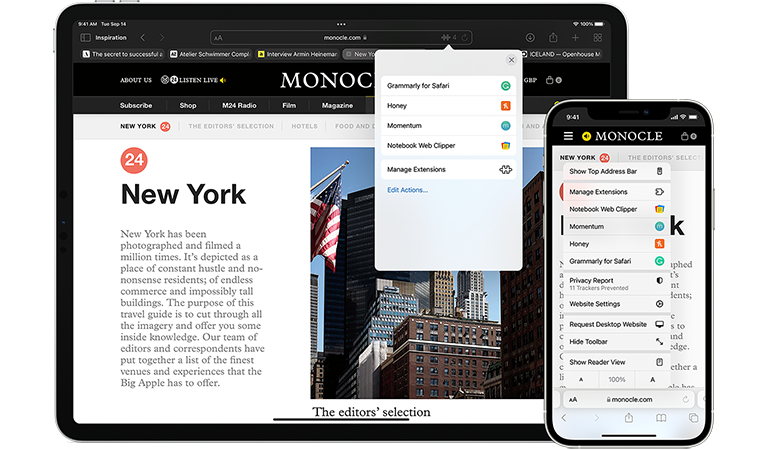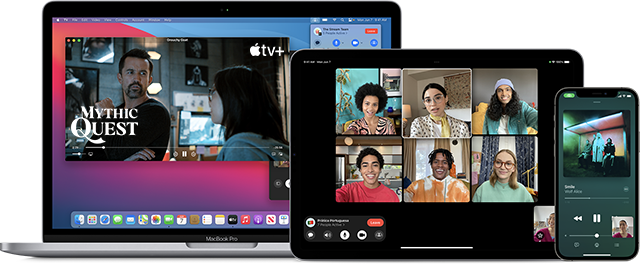Safari for developers
Safari is the best way to experience the internet on iPhone, iPad, and Mac. Thanks to blazing-fast performance and industry-leading energy efficiency, millions of users enjoy exploring the web with Safari. Take advantage of powerful new features, advanced developer tools, and cutting-edge technologies in Safari to deliver best-in-class websites and apps.

Safari web extensions
Safari web extensions use HTML, CSS, and JavaScript to offer powerful browser customizations — and now you can create them for every device that supports Safari. Learn how to build a Safari web extension that works for all devices, and how to convert an existing extension to Safari through Xcode and the Safari Web Extension Converter.

SharePlay in Safari
Create SharePlay experiences that people can enjoy on the web and in your app. Learn how to use the Group Activities framework in combination with your website to bring SharePlay to Safari, connecting people through shared interactions — even if they haven’t yet downloaded your app from the App Store.

Verification codes
Easily create more secure logins for users in iOS 15, iPadOS 15, and macOS Monterey, or later using the new iCloud Keychain verification codes. Take advantage of verification codes, AutoFill, iCloud Keychain sync, and two-tap setup to simplify the multistep sign-in process.
Passkeys with WebAuthn
With the Passkeys Technology Preview, you can try a new type of credential that’s intended to replace passwords. A passkey is a phishing-resistant WebAuthn credential that’s backed up and synced across devices with iCloud Keychain. Enable the technology preview using Enable Syncing Platform Authenticator in the Develop menu.
Split View in Safari on iPad
People can view two websites at once on their iPad using split view. Responsive Design Mode makes it easy to see how your websites will render in this view — just tap the iPad preview until it turns into a split view.
Apple Pay on the Web
Provide an easy and secure way to make purchases in Safari 10 or later. Apple Pay lets people quickly pay without entering payment, shipping, or contact information on supported websites from their Mac, iPhone, or iPad. Because card numbers aren’t used and each transaction is confirmed with a fingerprint or passcode, Apple Pay is more secure than accepting credit and debit cards.
Web Push in Safari
Send notifications to people who use your website or web app in Safari 16 on macOS 13 — even when Safari isn’t running. Fully interoperable, Web Push’s standards-based implementation relies on the Push API, Notification API, and Service Workers. If you’ve already coded Web Push using industry best practices, it will automatically work on Safari. And you don’t need to be an Apple Developer Program member to implement this feature.
Safari Technology Preview
Download Safari Technology Preview to get a sneak peek at upcoming web technologies in iOS, iPadOS, and macOS, and experiment with them in your websites and extensions.
